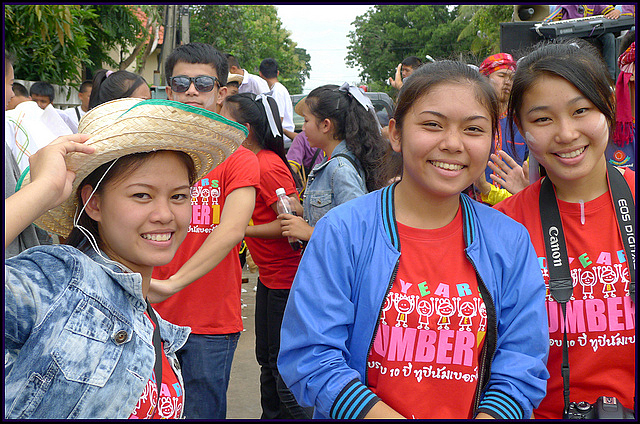Increasing prosperity in Northeast Thailand over the past 30 years has prompted researchers to wonder how changing economic conditions have affected the Rural Thai in that region. In 1982/83 and again in 2008/09, Jonathan Rigg and Albert Salamanca did a longitudinal (or “panel”) study of two villages in Mahasarakham Province in Isan, the term often used for the northeastern region of the country, to study this issue.

They surveyed 81 households in the villages in 1982/83 and 77 the second time around—interviewing as much as possible the same people or their descendants. They reported their findings in a recent journal article. The essence of their report is that enormous changes have swept through the two villages, similar to the ones in the rest of rural Thailand. Isan has changed from a subsistence farming society to a non-farm cash economy, and from mostly rural poverty to more or less rural prosperity.
The authors had expected that most of the surveyed households in the two villages would be better off but they were surprised about what they termed the “turbulence” in their results. Far more households than expected had moved radically upward in their ranking of income and wealth over the 26 year period but, conversely, numerous others were much poorer than expected. The reasons are complex.

One of the factors identified by Rigg and Salamanca was that in the early 1980s children of school age were not necessarily an economic drag on a household. Kids were able to perform economically important functions for their families, such as weeding fields, caring for buffaloes, and collecting wild foods.
By 2008, however, children were mostly in schools and farming families faced labor shortages. Hired labor had become expensive and the tradition of reciprocity—of sharing labor among farming families—had almost ceased. Furthermore, older farm children had been required to continue going to school—the number of years of compulsory schooling had been raised from 6 to 9 and then to 12 years by 1997.

With their older children now required to go to school and do homework, families were restrained from deploying them to help with the work. As a result, richer families in the authors’ study villages in 2008 had significantly higher numbers of working members—3.3 members between the ages 15 and 64—compared to the poorer households, which had only 1.4 people of working age. The poorer households had more non-productive mouths to feed, such as kids and elders.
Another factor adding to the confusion was that farm work was gradually being replaced by non-farm work as the economic basis of households. Because of that, the average age of farmers in the two villages had risen from 36 to 55 over the 26-year period. The reasons for the decline of farming in Isan have not been just economic and demographic, however. Farming is no longer viewed as a high-status field to go into, particularly for young people. It has become an occupation to avoid.

The basic issue is that wealth in Isan in 1982/83, including the Mahasarakham Province, was based primarily on wet-rice production, though other cash crops were grown in some upland areas too. At that time, the extent of land holdings were viewed as an indicator of household wealth. In other words, the 1982/83 study showed that the richest families at the time were the ones that owned the most acreage.
Oddly, by 2008, that factor had been reversed: land ownership had become mostly a symbol of poverty. The reason is that since income is now generated by non-farm labor, wealth is perceived in terms of other factors, such as the extent of personal education and the ability to migrate to different areas to secure good jobs. Owning a farm is now seen as a drag on household prosperity.
The authors found that numerous families had not only risen to prosperity but, surprisingly, others had declined into poverty. For instance, the family of a Mrs. Achara was among the prosperous group of people in their village in 1983; they owned plenty of rice-growing land. Her husband ran a profitable business trading livestock. But he was killed by lightning, leaving her with three young children to raise. The business soon collapsed and she had a serious illness so she had to sell a lot of land to pay the medical bills. By the time the authors interviewed her again in 2008 and 2009, she was one of the village poor in terms of both income and assets.

The authors reflected that the markers of wealth in the villages had mostly disappeared between the two survey periods. Household ownership of cattle was a marker of relative wealth in 1982/83 but it was not much of a discriminating factor in 2008. Although the villages were much more prosperous in 2008/09 than they had been 26 years before, people were still vulnerable and they still felt many economic pressures. They now needed to find the resources to pay for such essentials as electricity, gasoline for their vehicles, nights out, treats for their children, tuition for a university, and so on. Many households, Rigg and Salamanca conclude, may seem to have relative prosperity but they often feel that they are not too far away from poverty.
Rigg, Jonathan and Salamanca, Albert. 2015. “The Devil in the Detail: Interpreting Livelihood Turbulence from a 25-Year Panel Study from Thailand. Area 47(3): 296-304